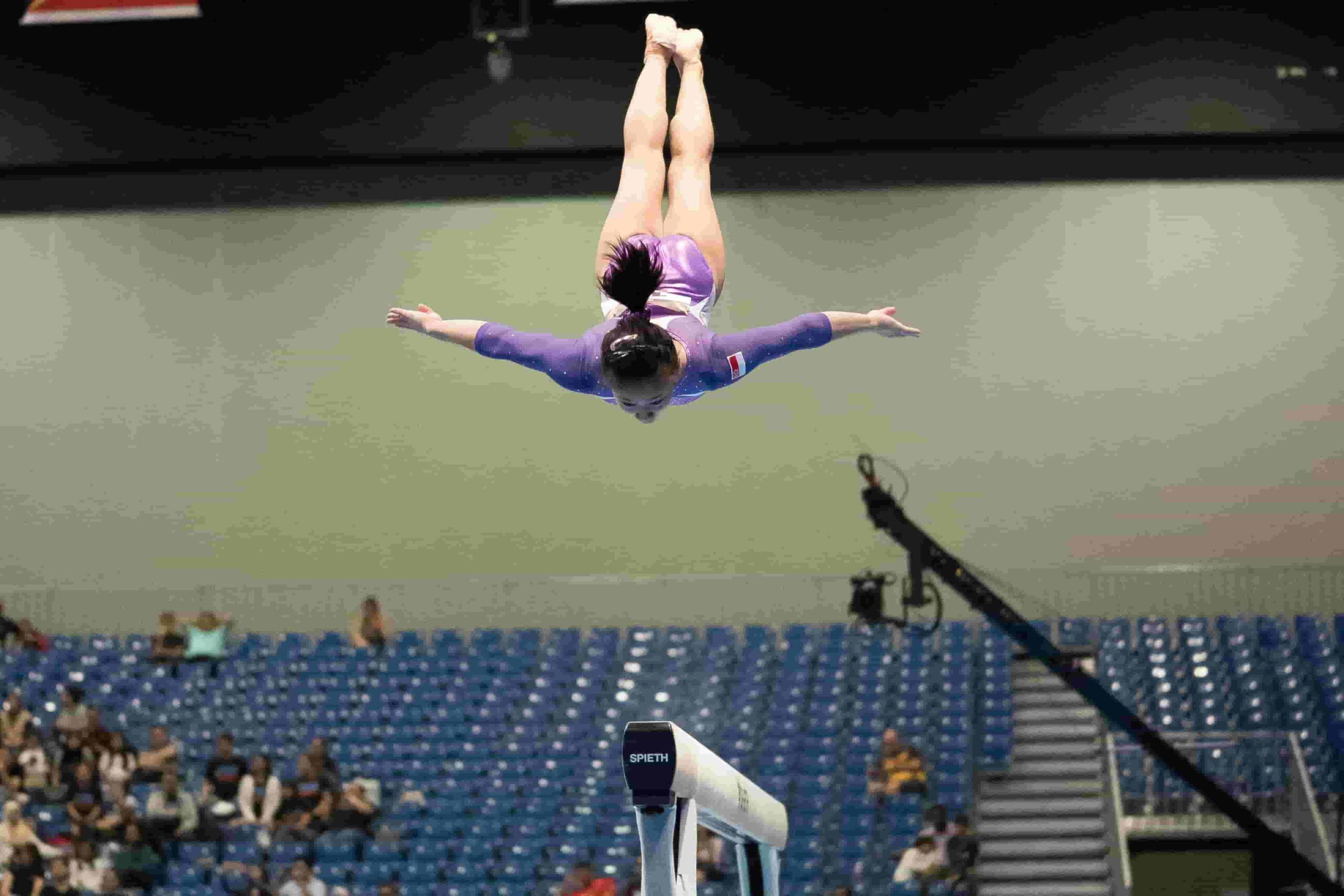Introduction:-In the realm of gymnastics, where strength, flexibility, and precision converge, sports acrobatic gymnastics stands out as a captivating and dynamic discipline. Combining elements of dance, balance, and acrobatics, this sport demands a unique blend of athleticism and artistic expression. As athletes push the boundaries of physicality, sports acrobatic gymnastics becomes a spectacle that not only showcases raw power but also celebrates the beauty of coordinated movements.
Origins and Evolution:
Sports acrobatic gymnastics has a rich history that can be traced back to ancient times when acrobatics were integral to various performances and exhibitions. However, the modern form of sports acrobatic gymnastics emerged in the late 20th century, finding its place within the gymnastics community.
The discipline evolved from traditional gymnastics, incorporating elements of acrobatics to create a distinct and thrilling experience. As it gained popularity, sports acrobatic gymnastics found its home in competitions worldwide, with athletes competing at local, national, and international levels.
Categories and Formations:
One of the defining features of sports acrobatic gymnastics is the emphasis on group dynamics. Athletes participate in groups of two, three, or four, forming balanced and synchronized routines that showcase their strength, flexibility, and agility. The categories include Women’s Pair, Men’s Pair, Mixed Pair, Women’s Group, and Men’s Group.
Each category presents its own set of challenges and opportunities for creativity. The choreography involves a combination of intricate lifts, balances, and dynamic movements, creating a visually stunning performance. The choice of music adds another layer of artistry, enhancing the overall impact of the routine.
Skills and Techniques:
Success in sports acrobatic gymnastics hinges on mastering a diverse set of skills and techniques. Athletes must excel in both static and dynamic elements, displaying a range of balances, lifts, and tosses. The strength of the base, who supports and lifts the top, is crucial, as is the flexibility and control of the top, who often performs gravity-defying poses.
The dynamic interplay between the athletes requires precise timing and coordination. A split-second miscalculation can impact the entire routine, emphasizing the need for trust and communication within the team. Training sessions are rigorous, focusing on strength conditioning, flexibility exercises, and the refinement of specific skills.
Artistry in Motion:
While sports acrobatic gymnastics places a significant emphasis on physical prowess, it is equally a form of artistic expression. Athletes seamlessly blend strength and grace, creating routines that captivate audiences and judges alike. The choreography tells a story, and the athletes become storytellers through their movements.
The choice of music, costumes, and themes adds layers of creativity to the performances. Whether conveying a narrative or expressing emotions, athletes use their bodies as a canvas to paint a vivid picture for the audience. This synthesis of athleticism and artistry sets sports acrobatic gymnastics apart, making it a spectacle that appeals to a wide range of viewers.
Competition and Judging:
Competitions in sports acrobatic gymnastics are a showcase of skill, precision, and innovation. Judges evaluate performances based on criteria such as difficulty, execution, artistic merit, and choreography. The difficulty level of the routine is determined by the complexity of the skills performed, including the variety and combination of elements.
Execution is equally critical, with judges assessing the precision, control, and synchronization of the athletes. Artistic merit considers the expression, musicality, and overall presentation of the routine. The cumulative scores determine the winners, making sports acrobatic gymnastics both a physical and artistic competition.
Challenges and Rewards:
As with any elite sport, sports acrobatic gymnastics presents its share of challenges. Athletes face the pressures of competition, rigorous training schedules, and the need for physical and mental resilience. The risk of injury is inherent in a discipline that pushes the boundaries of the human body.
However, the rewards are equally profound. Athletes experience a sense of accomplishment as they master new skills and contribute to a cohesive team performance. The camaraderie developed within a team is unique, as athletes rely on each other for support and success.
Global Appeal and Growth:
Sports acrobatic gymnastics has garnered a global following, with enthusiasts and participants spanning across continents. International competitions, such as the World Acrobatic Gymnastics Championships, showcase the diversity and talent within the sport. The inclusion of sports acrobatic gymnastics in multi-sport events further elevates its profile on the world stage.
The accessibility and inclusivity of the sport contribute to its continued growth. Athletes of various ages and backgrounds participate, and the sport offers avenues for recreational enthusiasts and competitive gymnasts alike. As more individuals discover the joy of acrobatic gymnastics, the community continues to expand, fostering a love for movement, teamwork, and creativity.
Conclusion:
Sports acrobatic gymnastics is a celebration of human potential, where strength, agility, and artistry converge in a harmonious display of athleticism. From its ancient roots to its modern-day prominence, the discipline has evolved into a captivating sport that resonates with audiences worldwide.
As athletes push the boundaries of what is physically possible, sports acrobatic gymnastics continues to captivate with its dynamic routines, awe-inspiring lifts, and artistic flair. The fusion of skill, strength, and grace creates a mesmerizing spectacle that transcends the boundaries of traditional gymnastics, making sports acrobatic gymnastics a unique and thrilling pursuit for both participants and spectators alike.

















